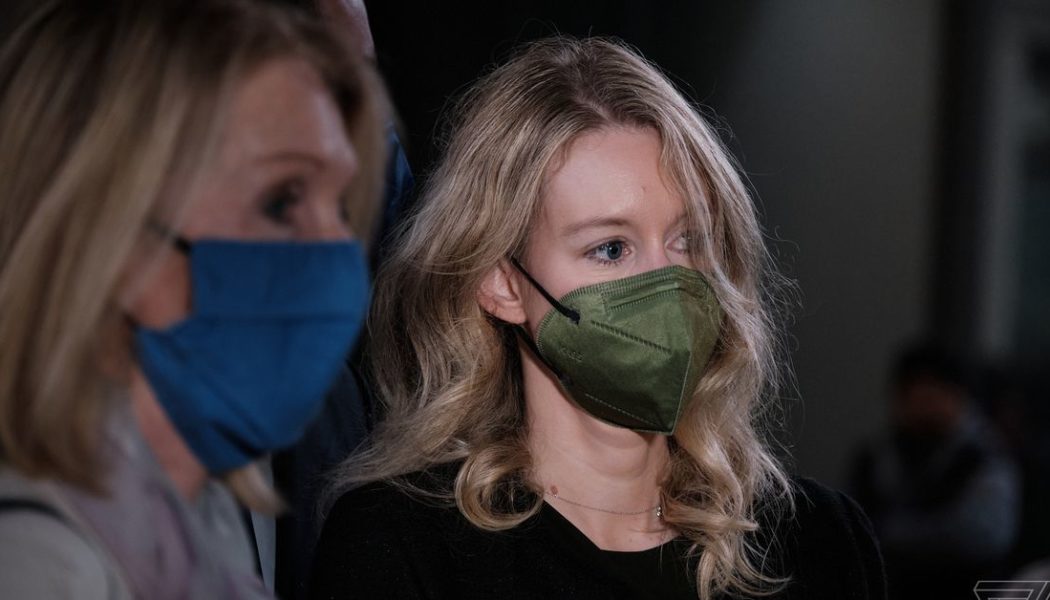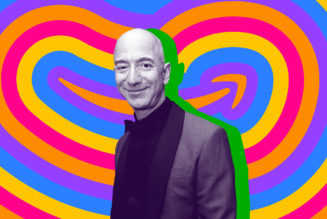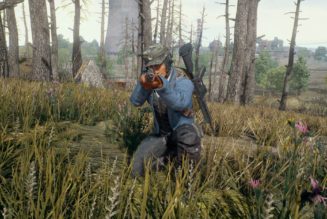
I expected more fireworks from a cross-examination of former Theranos CEO Elizabeth Holmes. Instead, today was a disjointed day of questions without a clear narrative throughline. I don’t know why the government chose to send an assassin who didn’t know when to twist the knife.
The defense presented a strong narrative on its direct examination. Holmes was a young CEO who believed in Theranos’ technology and had some very credentialed advisors who led her to believe it was real. There was real intellectual property. Holmes never sold her shares. And while she hadn’t done anything wrong, she was also being abused by her boyfriend, Theranos’ president Sunny Balwani, and maybe that clouded her judgment. (Balwani is Holmes’ co-defendant, but he is being tried separately.)
To counter that, the prosecution needed to show Holmes fully in control. She’s facing 11 counts of wire fraud and conspiracy to commit wire fraud — central to proving that charge is showing that she knowingly lied. On the first day of direct testimony, prosecutor Robert Leach drove her control home: Holmes owned most of the company. She could have fired anyone there, including both Balwani and her entire board of directors. Balwani had not kept secrets from her about what was going on in the lab.
Today was more scattered. Leach did score some points, but he didn’t carry through the narrative thread about Holmes’ control. Here’s a brief overview of the cross-examination:
- Holmes admitted that Theranos devices weren’t on medevac helicopters, as several investors claimed Holmes told them
- Holmes knew it would be wrong to tell an investor Theranos didn’t use third-party machines
- Holmes acknowledged that different financial projections were given to investors and the people calculating Theranos’ stock option values
- Holmes knew there were a bunch of things wrong in a big Fortune article, but promoted it anyway
- Emails showed Theranos did special preparation for demo tests, and didn’t report results they were having trouble with
- A 2010 slideshow from a Theranos scientist, which Holmes cited as part of her belief in the technology, was forward-looking and contained more aspirations than facts
- Patents are not the same thing as working devices
- The published journal articles, which Holmes also cited as part of her belief in Theranos technology, were after the period in which the alleged fraud took place
- Holmes knew the 2015 CMS inspection was going badly
If there was a theme, it was that Holmes didn’t recall a lot of events. But given how the defense delayed the trial, that seems possible — after all, a lot of this was more than five years ago, and some of the testimony concerned things from 10 years ago. It’s easier to say “I don’t recall” about events that happened 10 years ago than it is to say it about something that happened yesterday.
Personally, I was miffed because a promised discussion of “trade secrets,” which Holmes had offered as a reason she didn’t tell people about Theranos’ use of modified third-party machines, hardly came up. (Leach said we’d get to trade secrets last week, when Holmes used the phrase liberally in her answers.) Some corporations abuse trade secrets to protect information that has no competitive use — mainly to keep consumers in the dark. Arguably, Theranos’ use of trade secrets could fall into this category! But I guess we won’t find out, because Leach didn’t make this argument.
Helicopters and other military toys
Several investors — Lisa Peterson, Brian Grossman, and Bryan Tolbert — told the court that Holmes said the Theranos devices were used by the military, either on medevacs or in theater in places such as Afghanistan. Their testimony was echoed by Steven Burd, CEO of Safeway, which was one of Theranos’ business partners, and by Roger Parloff, the journalist who wrote a Fortune article that’s been heavily cited in the trial.
Holmes testified that Theranos devices weren’t being used by the military, aside from in one small burn study. She agreed it would have been wrong to tell people otherwise. And she said she never told anyone that Theranos’ devices were used on military helicopters. “I don’t think I said that,” she said.
She also testified that it would be wrong to tell a potential investor that Theranos didn’t buy any devices from third parties. But we didn’t delve into why Holmes conveniently left out that Theranos was using third-party devices; Holmes’ excuse was trade secrets, and the prosecution didn’t convincingly respond to that. It might have been helpful to suggest there was a sin of omission here — that by withholding information, Holmes had functionally lied.
The prosecution didn’t do that, either.
Weird revenue projections
The first witness in the trial, Danise Yam, had testified that she got revenue projections from Holmes to send to an analytics firm that was pricing Theranos’ stock options. These numbers were notably smaller than what Holmes was showing investors: showing a projection of about $53 million in revenue in 2015 and $153 million in 2016. In documents investors received, 2015 revenue was projected at $140 million and 2016 revenue was expected to be $990 million. These are extremely different numbers!
Holmes didn’t have a good explanation for why those numbers were so radically different, suggesting maybe there was something to do with a pharmaceutical contract. Leach knocked that down.
It doesn’t look good that the people pricing the options got lower estimates than potential investors — either the options were being under-priced or the investors were being misled. This was where I’d expected Leach to ask more questions: why were the models different? If it was because of different methodologies, why were they chosen? Who chose them? Why did Holmes allow this?
Instead, he moved on to his next topic without probing further.
Out for Blood?
Roger Parloff’s article for Fortune had put Theranos on the map for a lot of people. Holmes claimed she didn’t send it to shareholders — right before we saw an email from Theranos to its shareholders, linking the article. She also used it in investor presentations, even though she knew there were things wrong in the article. Holmes made no effort to correct those things.
We went through the article. There was no mention of modified third-party devices; instead, the article claimed Theranos did not buy third-party analyzers. That was wrong, Holmes admitted. Theranos did not offer more than 200 tests, as the article claimed, Holmes said. And it wasn’t true that Theranos’ labs took up a fraction of the space of conventional labs, Holmes said.
Leach could have lingered on Holmes’ lack of corrections to the article, the way her defense team had lingered on how Holmes didn’t receive negative feedback directly from pharma companies. He didn’t.
Demo derby
Leach then attempted to show that Holmes had misled investors by controlling their experiences in product demonstrations. In order to do that, some test results were suppressed. In other cases, Theranos employees made plans to make certain would-be investors received finger sticks — which Theranos touted as its revolutionary technology — instead of conventional venous draws.
In an email thread from October 2014, Theranos employees were preparing for a visit from potential investors. People from BDT Capital Partners were going to get their blood drawn. “Assumptions here from EAH [Elizabeth A Holmes] that we must not do venous draws, and we cannot tell them their order prompts venous if it does,” wrote Christian Holmes in an email.
He then laid out scenarios for what to do if venous draws were required. One possibility was to tell members of the group that certain tests couldn’t be done. Was this to conceal from BDT Capital Partners that Theranos relied on venous draws? No, Holmes said. Ultimately, BDT Capital Partners didn’t invest.
For a Walgreens demo in 2013, Theranos upper management meddled again. Several results were struck because “these are all running low, possibly abnormally,” wrote Theranos VP Daniel Young in an email. Theranos didn’t tell Walgreens they struck these tests or why, even though Walgreens was a business partner. Leach pointed out that Holmes could have chosen, instead, to have a frank discussion about some of Theranos’ struggles with its tests. She chose not to.
The believer?
During Holmes’ direct exam, her defense team trotted out a slideshow from 2010 as proof that Theranos’ tech was real. Leach pointed out that in slide after slide, the scientist author wrote in the future tense. It was about the tech’s potential. In the slideshow, there was discussion of “candidate technologies,” with lots of “TBDs.” That meant “to be determined,” Holmes confirmed.
“There was still work to be done,” Holmes conceded.
Similarly, Theranos’ patents were the subject of much discussion by Holmes’ defense. But patents are not the same thing as working devices, Leach pointed out. He then pulled up Holmes’ very first patent. The device it described does not exist. “Not yet,” Holmes said, laughing.
The defense had also pointed out that Theranos had published peer-reviewed work about its systems. Leach responded by asking Holmes to read the dates on the papers. All of them had been submitted in 2017 — and therefore couldn’t have influenced her state of mind during the period the government says that fraud was committed.
Exit interview
Leach pointed out that Holmes had been kept in the loop about how badly the regulators’ inspection of Theranos’ lab was going by Balwani over text. He also showed an email that gave a schedule for Holmes, who had taken a flight to Florida to receive an award on the first day of the inspection. (The schedule noted that Holmes had to be physically present at a lunch to get the award.)
The inspectors did an exit interview with Theranos before they left. Holmes was there. Leach asked if Holmes was told that the lab would be found to be putting patients’ health in immediate jeopardy, which Holmes staunchly denied. She was shown a document the rest of the court didn’t see — and said it didn’t refresh her memory. Holmes said she thought she was talking with inspectors about what Theranos had done properly. It wasn’t entirely clear what the point of this line of questioning was.
And with that, the cross-examination sputtered to a halt. Holmes seemed amused on the stand, often smiling or laughing at Leach. Maybe she sensed she had the upper hand.
Here’s the thing about stories: people remember them. They form an organizing backbone for facts, making the facts more memorable. Holmes’ defense made an emotional case with a narrative throughline — easy to remember. But Leach’s inept response didn’t give the jury another narrative to counter that, and it certainly didn’t pack the emotional punch of Holmes’ direct testimony. Leaving the court, I had the distinct sense that the prosecution had botched a prime opportunity.
Holmes’ attorneys will have a chance to ask her more questions tomorrow, potentially poking more holes in the government’s case and reinforcing their own narrative. After she leaves the stand, there’s very little left to hear — Holmes’ defense has been coy about whether they will call another witness. They may not have to.









